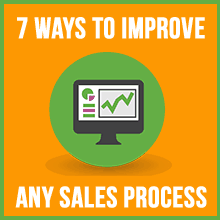
It’s no secret that the world of sales is fast-paced and constantly evolving.
In a blink of an eye, competitors can spring up and target your customers with similar products or services, which isn’t great but seems to be a daily occurrence.
When this happens, you’re involved in a rat race you clearly never signed up for. But the important thing is that you need to be prepared for it to happen to you.
If there’s one bit of advice you should cling onto, then it’s that your sales strategies – you know – the ones that allowed you to hit your targets a decade ago – simply won’t cut the mustard today.
“But I hit all my targets with those sales strategies and my sales process is bulletproof!”
Think again.
Your competitors are armed with bullets (strategies and sales processes) that’ll pierce your Kevlar-sales-vest.
If you want to make a difference in today’s sales market, you need to understand and review your own sales processes and make improvements to them today.
Gone are the days when you could build your sales process on the fly. There’s simply no time to dance to the “trial and error” song.
“Hoping” that your sales process will work, or having that “gut-feeling” will see you lapped by your competitors before seeing them dab themselves to the finish line.
Here at LeadGibbon, we know all too well that a sales process has to keep evolving.
Remember, there’s no magic wand to your sales process, and to prove it, we’ve jotted down the top seven key ways to ensure you’re streamlining your sales process.
1. Buyer personas
Do you know who your ideal buyers are? What work they do? Their struggles and desires?
Can you point out what they love, hate and fear? What about their hobbies, activities, and passions?
The answers to these questions matter, because you are selling to actual people. You need to know as much as possible about who your product or service is for. In fact, you should be able to refer to these characters by name just like you would with actual customers.
As buying habits evolve, it’s necessary to market and sell to the right people. Creating buyer personas allows you to do just that. As more businesses realize this, buyer personas are steadily becoming an essential component of the sales process.
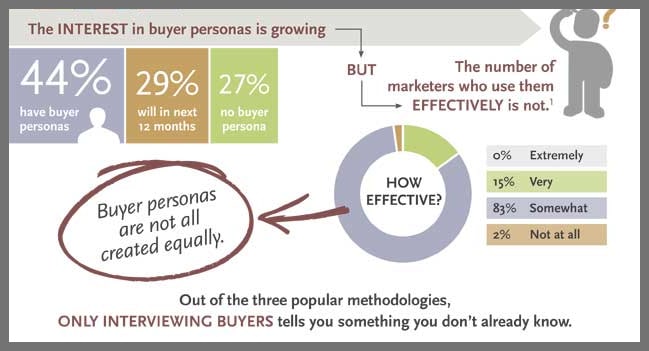
(Source: Buyer Persona Institute)
What makes a good buyer persona?
The more detailed your buyer personas are, the better. Think about it, the more you know about someone, the easier it is to figure out what makes them tick.
When creating a buyer persona, your Sales Team should team up with your Marketing Department; two heads are better than one and the combined knowledge of both Sales and Marketing will allow you to create better, more realistic persona that depicts your target customer base to a T.
It’s no wonder these personas are referred to as marketing personas sometimes. In short, sales and marketing need to join forces to make this a success, otherwise, you will be left with vague details that make no sense.
When it comes to gathering data for creating the personas, there are many methods you can use. You can start by making a list of companies you’d love to see as your customers and search for their company information to understand what qualities they share with each other.
However, consulting stakeholders, interviewing customers and conducting surveys are some of the most common ways to go about collecting information.
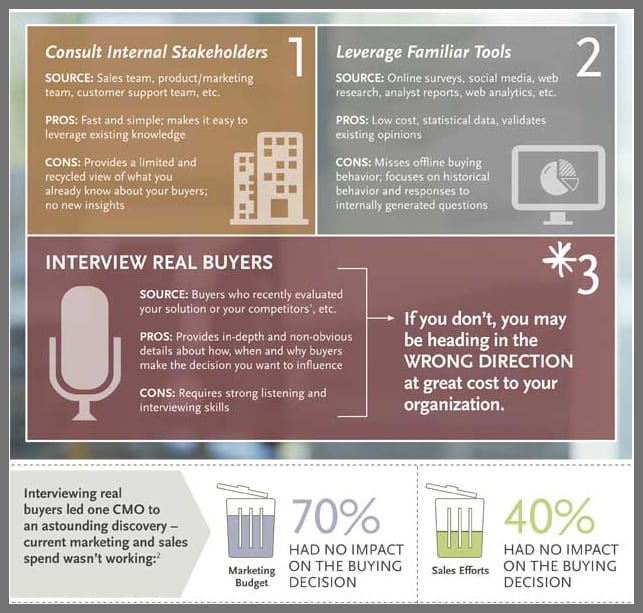
(Source: Buyer Persona Institute)
Some businesses might require one persona, others might need ten. That really depends on who your target market is and what you are selling. However, no matter which industry you are in, a few things are similar across the board when it comes to creating a customer persona.
Things like a fictional name coupled with insights that reflect age, occupation and pain points are some of the mandatory elements in a good buyer persona.
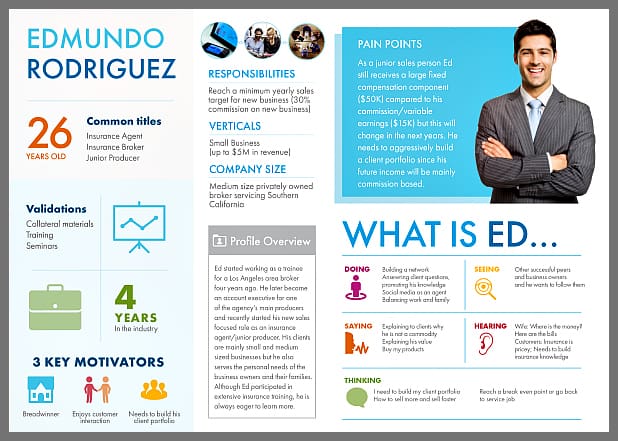
(Source: Liz Hidalgo)
Bonus: Hubspot has a great guide that covers this topic in depth. You will find where to look when searching for answers, who to get in touch with, as well as the template to use when creating a customer persona.
2. Social media prospecting
Once you have your buyer’s persona all done, it’s time to go prospect hunting. A healthy list of prospects ensures that the sales pipeline is always full, so it makes sense to prospect on a regular basis.
However, many businesses fail to make prospecting a part of their activities. It’s not uncommon to come across stale prospecting lists that are hardly updated. Also, many sales professionals consider prospecting a time-consuming task.
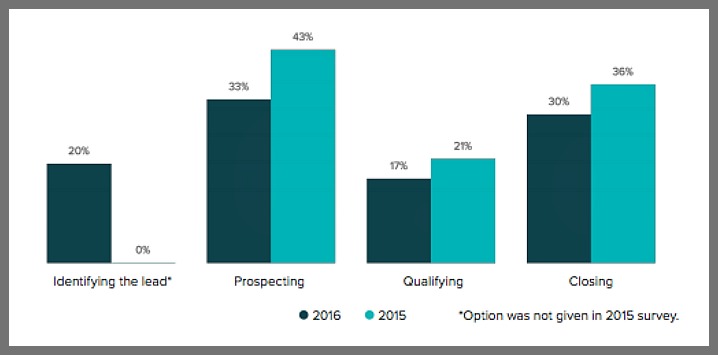
(Source: Map my customers)
The good news is that social media makes prospecting very easy. In fact, half an hour a day on social media can significantly increase your chances of finding and connecting with prospects.
Not to mention, social media prospecting yields good results in a short span of time.
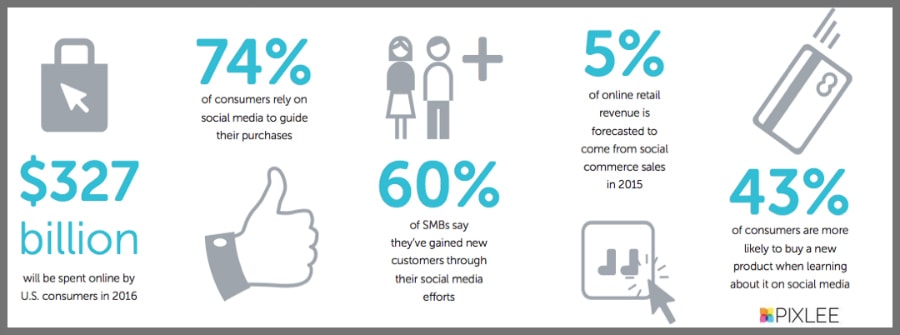
(Source: Pixlee)
Social prospecting makes direct use of a buyer persona and that’s why it is important to have one in place before you begin. The data you compiled when creating your buyer personas helps to narrow down the places your potential prospects hang out online.
So based on this data, you can choose to go prospecting on a professional network like LinkedIn or target multiple channels like LinkedIn, Twitter, and Facebook. Age is also another factor to keep in mind when thinking of which social media channels to target as illustrated by the chart below.
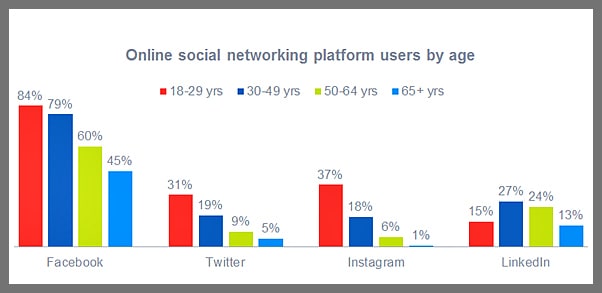
(Source: Super office)
No matter which platform you choose, you should focus on building a strong online presence. For example, taking part in discussions, offering to help people and sharing useful content can put you directly in front of potential prospects.
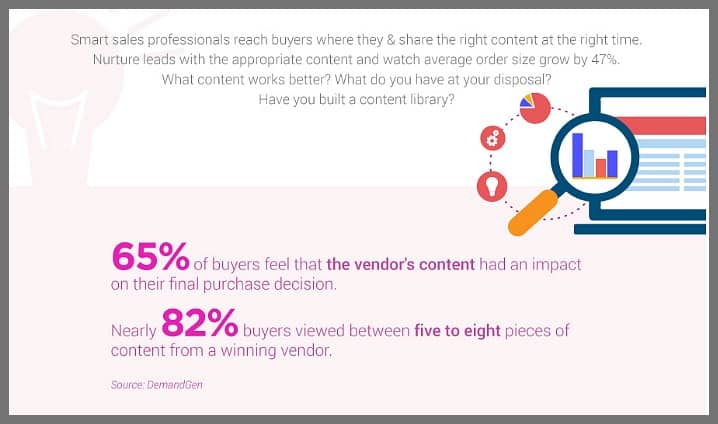
(Source: Sales for life)
With the bulk of social selling taking place on LinkedIn, it’s important to focus on creating a powerful profile. So, make sure your profile/company page is up-to-date so anyone who lands there will know what you are offering.
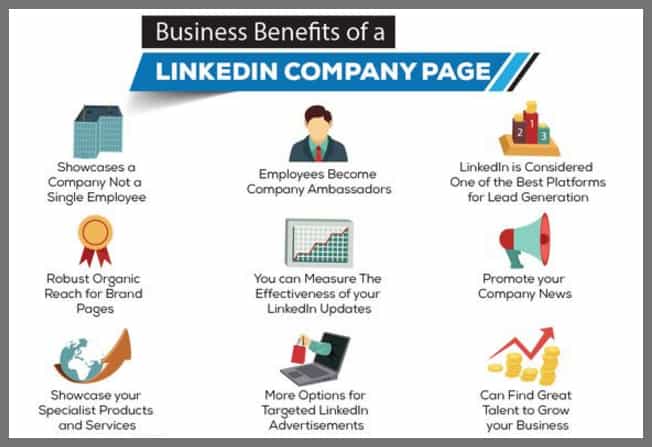
(Source: Social media marketo)
The same applies to all other social networks, update them regularly. No one likes to visit stale pages with out-of-date information. This is because a large percentage of customers rely on the social media content of brands and businesses to make a purchasing decision.
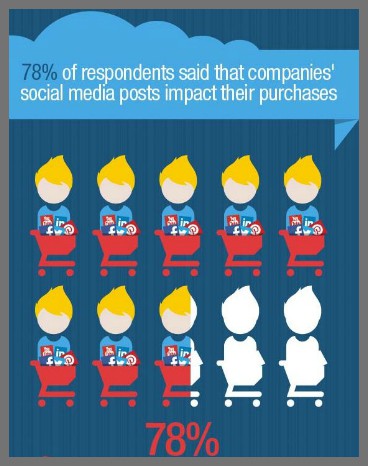
(Source: Social media )
Failing to take advantage of this shift in buying habits means your business can go downhill and into oblivion in today’s fast-paced world. So, don’t wait for that to happen before you scramble to claim a spot on social media.
Bonus: Here’s a social prospecting workbook you can use to find new leads on social media.
3. Quick response rates
Connecting with prospects is very important. Sometimes, your prospects will show interest and ask questions even before you have had the time to pitch to them.
That is a good sign but don’t high-five yourself just yet. You still need to make a good impression in order to convert them into customers.
The key to success here is speed. For example, if a new prospect subscribes to your newsletter or someone asks a question about the product, the sales team must respond quickly.
Almost one-third of sales are finalized by vendors who respond first to the queries. This means that quick response times are crucial if you don’t want leads slipping out of your hands and going to your competitors.
In the chart below, you can see that the majority of companies studied by Inside Sales struggled to respond within the first 24 hours. Imagine the number of sales opportunities they missed out on just because their response rate was slow.
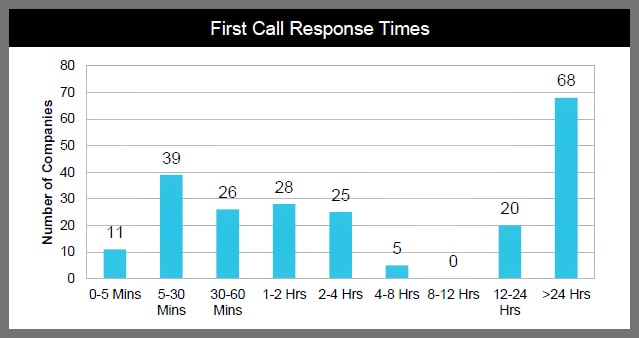
(Source: Inside sales)
The best, proven practice for an effective sales process is to call a prospect after sending an email. According to another study published by Lead Response Management, the success rate if called in the first 5 minutes can drop by 21 times if delayed to 30 minutes.
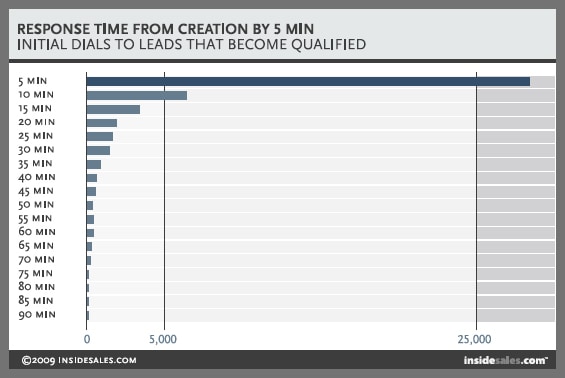
(Source: Lead response management)
Due to the short lifespan of leads, it is important to have a system in place that will ensure quick response rates. Take time out to figure the best way to improve your company’s response rate or go here for some tips.
4. Focus on the prospect
It’s easy to get carried away when talking about how great your product is or how top-class your services are. But bragging does little to capture the attention of prospects.
In a survey by the American Management Association, 18% out of 1100 respondents mentioned that salespeople with poor listening turned them off. Such salespeople lose potential customers simply because they fail to pay attention to what their prospects are saying.
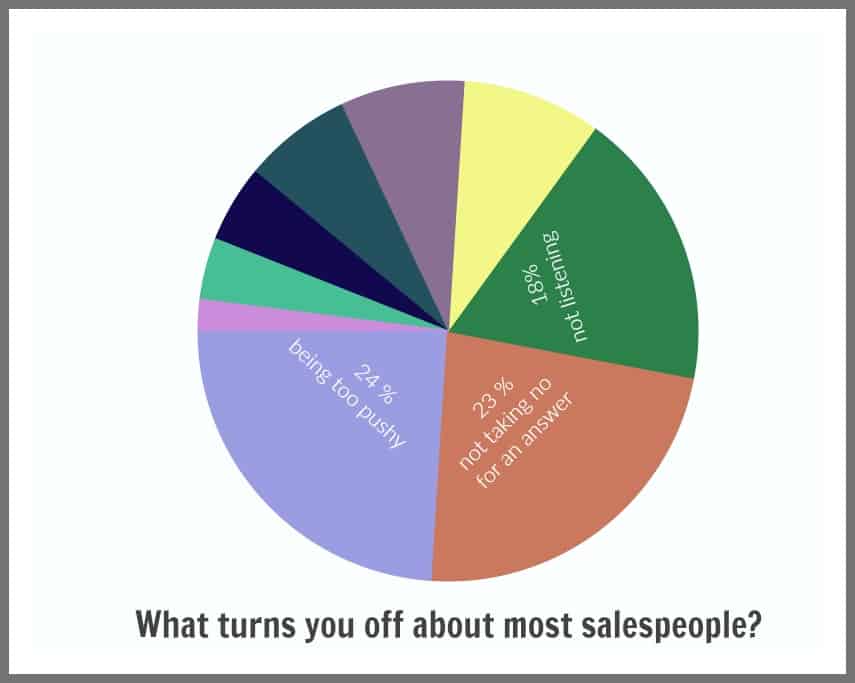
So how do you actually get prospects to show interest in your offer? The only way out is to focus on their specific problems. Digging deeply to unearth their pain points makes them sit up and listen to you. But in order to do that, you need to listen first.
Salespeople must be trained on how to develop their listening skills. Also, they must make sure to allow the prospect to finish talking instead of jumping in and stealing the spotlight. Really paying attention to a prospect’s requirements allows you to provide a customized solution.
Sometimes, you may not have the solution they are looking for but simply taking the time to listen helps you understand what people need.
During interactions, prospects may voice their objections. So always be prepared beforehand. Practice what to say in response to common objections such as price, features, design, etc. This way, you won’t be caught off-guard whenever you come across any objection.
Bonus: Here are some common sales objections and how to overcome them.
5. Personalized emails
Emails are a great way to get in touch with prospects and build relationships. However, cold emails have gotten a bad rep since people tend to associate them with spam and irrelevant offers.
In order to make your emails stand out, you need to target the right prospect with the right message. Focus on personalization and providing value. Again, shift the focus from your company or product to the customer’s needs first.
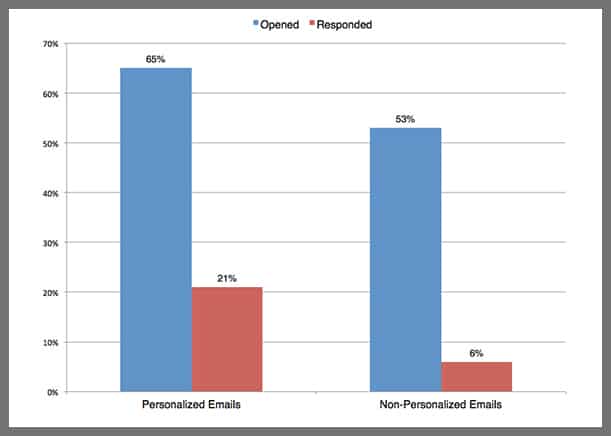
Remember that it only takes seconds for someone to mark an email as spam, so make sure you spend time crafting an informative and engaging email. Otherwise, you are better off not sending any emails at all.
The trick to getting people to read your email is to include the human touch as much as possible. Writing in a friendly tone makes it easier for people to keep on reading until the end.
Bonus: Here’s a list of email finders, tools, and techniques to help you find the email addresses of your prospects.
6. Automation
Going by their name, you would think that the work of salespeople is to sell. However, salespeople spend less than half of their day actually facing customers and selling.
So, where does the rest of their time go? In the chart below, it becomes obvious that they juggle a lot of different tasks apart from selling.
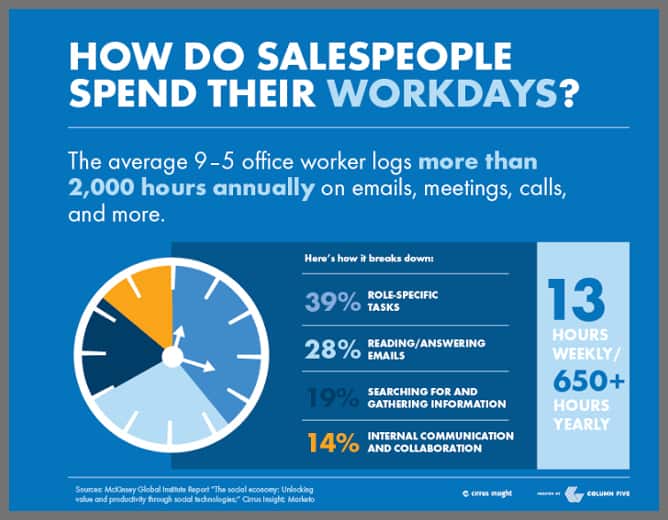
(Source: Hubspot)
In order to help salespeople to increase their selling time, automation is necessary. All parts of the sales process that can be automated, should be.
Some examples of tasks that can easily be automated include:
- Lead capture and scoring
- Lead nurturing through email
- Project management and tracking
- Compiling databases of prospects etc.
There are so many other tasks in the sales process that can also be automated easily. As companies look for ways to increase productivity and efficiency of their sales teams, the demand for automation is on the rise.
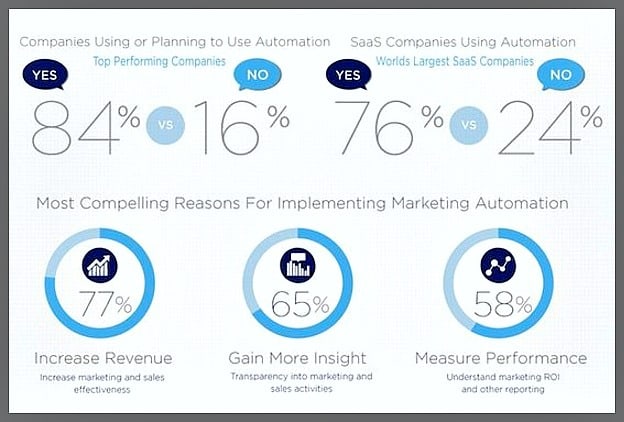
(Source: Pardot)
In order to recognize which tasks should be automated in your company, it is important to ask your sales team to provide insights on what takes up most of their time. This is because every business is different and what will work for one may not work for the other.
Using their responses, compile a list and find a tool that meets your requirements. The only caveat here is the number of options. The market is packed with good apps and finding the one that works for you can be an issue.
Thankfully, there’s a ton of research regarding the best automation tools and software so use it to your advantage before making a purchasing decision. This is will save you countless hours testing dozens of apps just to find the one that fits your needs.
7. Customer referrals
If your company does not have a referral system in place, then you are missing out on a lot of potential customers. Many businesses thrive through customer referrals and there is no reason why you can’t do so too.
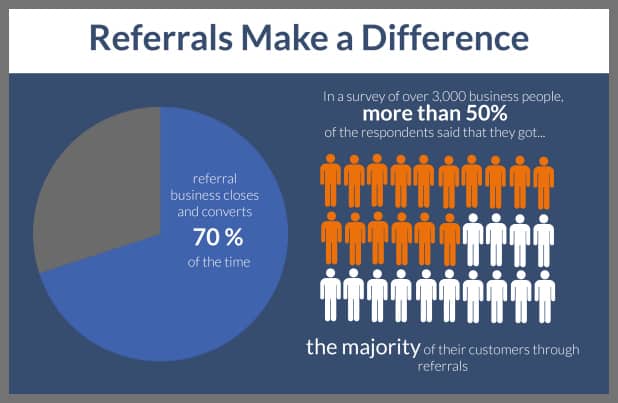
(Source: Front spin)
Since referrals usually work like a second slice of cake, you don’t get it unless you ask for it. And many salespeople fail to ask for referrals even though the majority of customers report that they are more than willing to help out. Whenever a customer is delighted due to your product or service, take advantage of that and ask for referrals.

You can even go a step further and offer something in exchange for referrals. Many successful businesses do this and they see referral rates go up. Referred customers have lower churn rates and higher lifetime value. It’s no secret that these are the type of customers you should aim for.
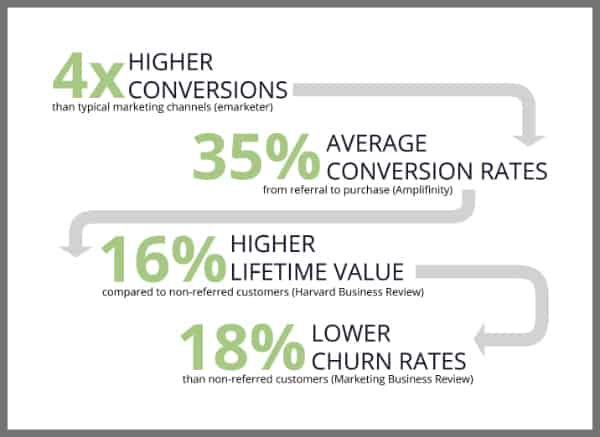
(Source: Amplifinity)
Think of referrals as a shortcut to qualified leads. This is because people trust other people they know when making a purchasing decision. So, the chance of scoring sales goes up due to word-of-mouth and the power it has to shape people’s perceptions towards a product of service.
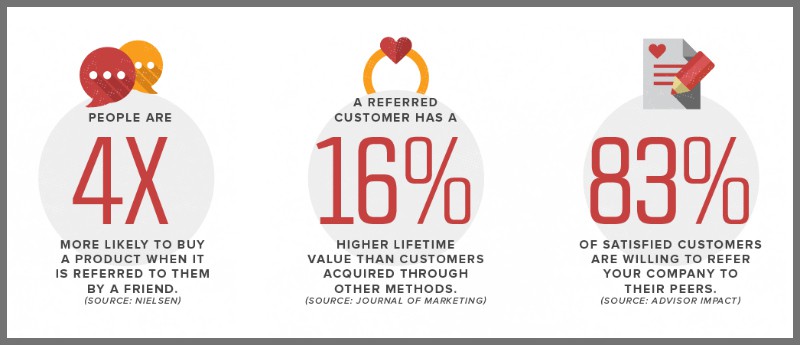
(Source: Promoto)
As you can tell, refining and optimizing all the various parts of the sales process is key to increasing sales and crushing quotas. Taking time to tweak the sales process with feedback from the sales team and their experiences alongside industry insights can make a huge difference.
Don’t settle for what used to work a couple of years ago and focus on what works today instead. That is the only way you can improve your sales process for best results. After all, the way people buy is changing and so should the way you sell.
Have a question about something I wrote?
If you have something to add that may improve the helpfulness of this information, I’d love to hear from you.
Whatever the case, leave your thoughts in the comment box below and I will get back to you.

This is a very good round-up of statistics, particularly the one on customer referrals. Thank you fro providing sources for the numbers.